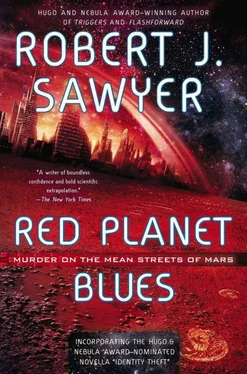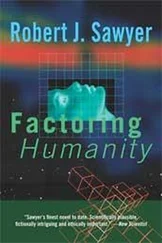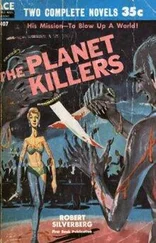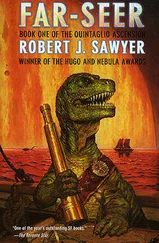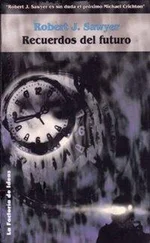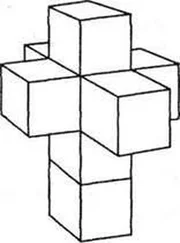“Do you have a portable tracking device?” I asked.
Horatio went to a cupboard and got a small disk-shaped dingus. He made a few adjustments on it and handed it to me. One of its faces was a viewscreen showing a miniature version of what was on the wall. “All right,” I said. “You stay up here for five minutes, do you hear me? Start counting Marenerises, and don’t stop until you’ve hit three hundred.” I backed away, opened the door while keeping my gun on him, closed it behind me, and headed downstairs.
Mac was bent over, running his scanner along the floor.
“Pickover has a tracking chip in him.” I held up the device that Fernandez had given me.
Mac straightened. “Is that a fact?” he said, in a tone that conveyed he knew there was a story to tell.
“Aye,” I said, imitating his brogue. “’Tis.”
Mac had left the disruptor disk leaning against the cash counter. He retrieved it, and he and I headed out of the shop.
The little one-seater police car Mac had returned here in didn’t have a place for me, but it did have a rear bumper and a couple of handholds on the back that could be used to transport a standing person. I positioned myself there, Mac placed the disruptor in the little gap behind the seat, he got in, and we took off down the street, Mac navigating using the device I’d gotten from Fernandez.
From my perch at the back, I couldn’t see the tracking device, and I pretty much had to concentrate on holding on for dear life as Mac sent us careening along. But from what I’d seen on the display before I’d given Mac the tracking device, Rory, and likely Reiko and the meese, were heading toward the south airlock—or some point between it and here. The three transfers could just walk right out onto the Martian surface, but Reiko would have to be stuffed into a suit, and that would take time; if they’d actually wanted Rory instead of Reiko, I suspected they’d dump her before reaching the airlock.
Mac could call ahead to the airlock station and ask the guards there to try to detain the meese, but there wasn’t a lot biologicals could do against two giant transfers programmed for super strength, and Mac’s principal job was protecting Howard Slapcoff’s investment; the last thing old Slappy would want is the airlock station being wrecked.
Pedestrians were gawking at us, and at one point when we had to pause to avoid hitting a recycling truck, I gave them a jaunty wave.
The road we were on took us by the shipyard. It was possible that that had been the meese’s destination, but Mac was giving no sign of slowing down. I looked over at the sea of dead hulks—shattered dreams, broken lives, abandoned hopes. I just barely made out the descent stage we’d recovered off in the distance.
Mac hit the siren just then, and it startled me enough that I almost lost my grip. But as soon as the vehicle in front of us got out of the way, he shut it off. The dome was never far overhead anywhere in New Klondike, but it had now dipped quite a bit lower; we were at the outer ring where only one – and two-story buildings were possible.
Mac brought us to an abrupt stop. I hopped off the bumper and came around to the side of the car. The gullwing door rose, and Mac clambered out. He retrieved the disruptor, and we headed over to the complex of airlocks.
“They’re stationary,” Mac said, holding up the tracking dingus so I could see its circular display. “Outside—about half a klick southeast of here. I tried calling for backup, but the other three cops who are on duty today are dealing with a small riot over by the east airlock—somebody accused somebody else of claim-jumping, and it’s gotten out of hand.”
I nodded and started making my way to the suit-rental counter when Mac motioned me through a door labeled “Official Use Only.” Inside was a change room for the police, with four suits hanging from racks. Two were navy blue and bore the initials NKPD across the back and had the police crest on each shoulder; the other two were nondescript plainclothes affairs. We suited up. Mac opted for one of the blue suits, and I took one of the plain ones, in a drab gray.
We went through a personnel airlock and came out on the Martian sands. The sky was dark, and the stars were out in all their glory. Off in the distance was a spaceship, lying on its side. In the dim light, it was hard to make out its contours, but it was a small vessel—a hibernation ship, not a luxury liner with cabins like the Skookum Jim, and—
Of course. It was the Kathryn Denning, formerly the B. Traven, the infamous death ship, recently returned to the Red Planet.
And, judging by the display on the tracking device Mac was holding, the meese had taken Rory Pickover right to it.
THIRTY-ONE

If a ship needed dry-dock repairs it was hauled inside, but most vessels that came to Mars were never brought into the dome—rather, they were prepped for turnaround out on the planitia. Mac and I started walking the 500 meters to the Kathryn Denning. Bertha had said earlier that the ship’s cargo—which presumably consisted mostly of people in hibernation units—was being offloaded. It looked like that had been completed; we could see the wheel ruts made by the vehicles that had been involved.
Also visible in the dust were footprints. There were two sets of large running shoes and a smaller set of work shoes, but no space-suit boots. The meese had indeed disposed of Reiko at some point; I hoped she was okay.
From the look of the tracks, Rory had been walking in front, with a moose behind and to either side of him. I doubted he’d been leading the way, though; rather, they’d been propelling him along, and—
“See that?” I said over the suit radio.
“Aye,” replied Mac.
The tracks told the story. Rory had tried to run: you could see the place where he’d leapt up, and where he’d impacted ten meters farther ahead. The meese had leapt as well, and there were clear signs that they’d all ended up tussling on the ground. And then for the rest of the way, there were only the two large sets of tracks, but one had adopted a shorter gait; I assumed a moose had picked up and carried Rory—who might well have been screaming and kicking—from that point on.
The spaceship was a stubby spindle, with its front and rear points lifted above the ground. Cargo hatches—some open, some closed—were visible, and there was a ramp coming down from what looked to be an airlock door. We walked closer, and I shined my suit’s chest light up at the hull, which was a yellowish beige.
Along the bow, in script letters, were the words Kathryn Denning. My light was hitting the hull obliquely, revealing just beneath and behind that name some slightly raised lettering that had been painted over; under normal full-on lighting conditions I doubt it would be visible at all, and if I hadn’t already known it said B. Traven, I probably couldn’t have made it out.
A spaceship was a good place for a hostage-taking: it was designed to survive micrometeoroid impacts, which meant it could take a hail of bullets, too. It also had its own life-support system—and it could take off if need be.
Mac walked up the ramp, which was pretty steep, and he tried the door. It was locked. Mac told his phone to get him the New Klondike office of InnerSystem Lines; this close to the dome, his phone worked fine, and I could hear his conversation over our shared radio link.
The phone rang four times, and I thought perhaps everyone had gone home for the day. But then a woman’s voice said, “InnerSystem. How can I help you?”
“I’m Detective Dougal McCrae of the New Klondike Police Department, and this is an emergency. I’m standing outside the Kathryn Denning, and need access to the interior.”
Читать дальше
